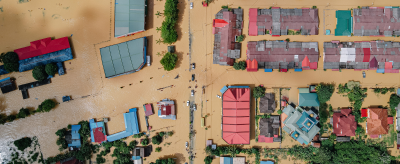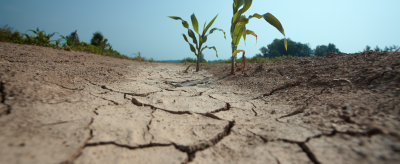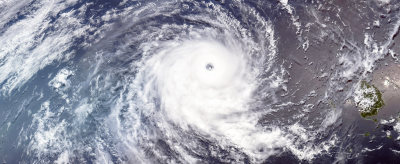WMO and the Early Warnings for All Initiative
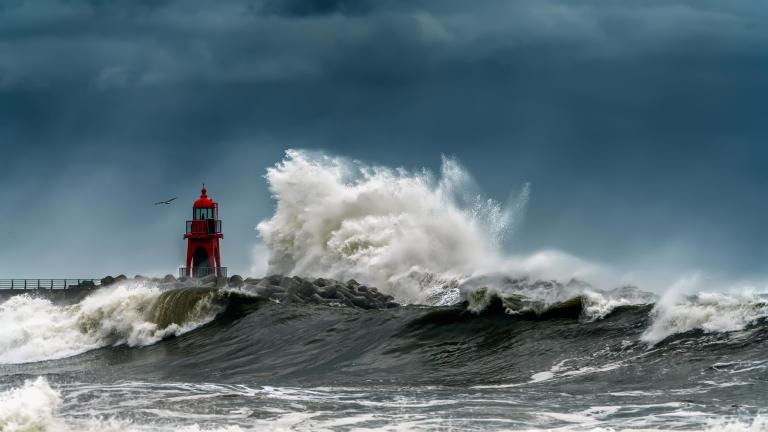
The Early Warnings for All initiative aims to ensure universal protection from hazardous hydrometeorological, climatological and related environmental events through life-saving early warning systems by the end of 2027, a call echoed by the United Nations Secretary-General António Guterres in 2022.
Today, one third of the world’s people, mainly in least developed countries and small island developing states, are still not covered by early warning systems... This is unacceptable, particularly with climate impacts sure to get even worse. Early warnings and action save lives. To that end, today I announce the United Nations will spearhead new action to ensure every person on Earth is protected by early warning systems within five years.
UN Secretary-General António Guterres on World Meteorological Day, 23 March 2022
With human-induced climate change leading to more extreme weather conditions, the need for early warning systems is more crucial than ever. Despite the urgent need, only half of the countries worldwide report having adequate multi-hazard early warning systems. A Multi-Hazard Early Warning System (MHEWS) is an integrated system which allows people to know that hazardous weather or climate events are on their way, and informs how governments, communities and individuals can act to minimize impacts. MHEWS should be people-centred to empower those threatened by hazards to act in sufficient time and in an appropriate manner, and must build on partnerships within and across relevant sectors.
Four pillars for delivery of end-to-end MHEWS
The initiative is built on four pillars to deliver effective and inclusive multi-hazard early warning systems, and is co-led by the World Meteorological Organization (WMO), the United Nations Office for Disaster Risk Reduction (UNDRR), the International Telecommunication Union (ITU) and the International Federation of Red Cross and Red Crescent Societies (IFRC) and other partners.

The delivery of Early Warnings for All requires scale up and coordinated investments and action across the four essential pillars of end to end, people-centred Multi-Hazard Early Warning Systems (MHEWS):
- Pillar 1: Disaster risk knowledge
- Pillar 2: Detection, observation, monitoring, analysis, and forecasting
- Pillar 3: Warning dissemination and communication
- Pillar 4: Preparedness and response capabilities
WMO leads the implementation of Pillar 2: Detection, observation, monitoring, analysis, and forecasting, with support from UN Development Programme (UNDP), UN Educational, Scientific and Cultural Organization (UNESCO) and UN Environment Programme (UNEP).
Pillar 2 is critical for societies to be better equipped to understand, prepare for, and respond to the evolving challenges of our changing climate: Early Warning Systems rely on worldwide sharing of data collected from the Earth's surface and space. This information is freely exchanged between countries and analyzed by highly advanced supercomputing modelling centres. These centres run numerical models which simulate how different parts of the Earth System (weather, hydrology, oceans, and cryosphere), interact with each other. From these simulations, predictions are made and then passed down from global to regional and national levels. This allows National Meteorological and Hydrological Services (NMHSs) to provide accurate forecasts to citizens. Without this coordinated effort facilitated by WMO, modern day weather and hydrology forecasts would not be possible.
Pillar 2 aims to address several challenges:
| Only a third of WMO Members and Territories report having multi-hazard monitoring and forecasting system | Half of the 30 countries initially selected for Early Warnings for All coordinated assistance operate with basic monitoring and forecasting capacity, and close to a quarter with less-than-basic capacity | There are critical gaps in surface and upper air meteorological observations across Africa, parts of the Pacific and West of Latin America |
| Only 67% of WMO Members report having warning and alerting services available 24/7 | Only 56% of countries report using hazard, exposure and vulnerability data in their forecasts, delimiting the progress on impact-based forecasting and warning | Only 38% of Members report having legal arrangements to enable MHEWS |
In response to these, the Pillar 2 Implementation Plan is focused on delivering 5 outcomes:
Improving data quality and access:
It's essential to have more high-quality data available for checking and keeping an eye on major dangers. This data forms the backbone of services for weather, climate, and water. We need to make sure countries can get to and use this data to watch over their main risks.
These efforts start with setting up modern measurement networks (Global Basic Observing Network, Regional Basic Observing Network) and building the capacity of the NMHSs to maintain and upgrade them. Monitoring is not only done by in-situ measurement: crucial data also come from satellites (Coordination Group for Meteorological Satellites) and airplanes (Aircraft Meteorological Data Relay). Increasing the availability and usability of these data sets in all parts of the world is essential. Measurements by themselves are not enough - data needs to be collected and shared in real-time to feed the forecasting models, to be analyzed by the operational centers, and to inform decision-makers.
Sharing data worldwide:
Ensuring easy sharing and access to data globally is paramount, particularly when it comes to forecasting and issuing early warnings. Organizations tasked with collecting or generating data sets, creating forecast products, refining information, and offering storage services play a pivotal role in this effort. Our goal is to enable smooth data sharing across local, national, and global scales while keeping it cost-effective.
The WMO Information system (WIS) is the powerful mechanism that enables this international data exchange. We focus on improving real-time monitoring data exchange, ensuring this data is ingested into global and regional forecasting centers (WMO Integrated Processing and Prediction System). Additionally, we work on the seamless flow of digital predictions to the regional and national forecasting centers.
Enhancing forecasting capabilities:
Our focus is on refining the utilization of predictive tools for significant weather-associated challenges. The effort begins with establishing global and regional forecasting centers (WMO Integrated Processing and Prediction System) producing state-of-the-art predictions and providing countries with high-level products tailored to meet their needs. Leveraging improved data, advanced computational power, and deepening insights into weather dynamics, our weather forecasting precision is enhancing. As we coordinate member capabilities, we prepare and distribute meteorological analyses and forecast products for all Members, ensuring the provision of consistent and harmonized services, which is essential for our future readiness.
The AI revolution allows us to add improved capabilities to the forecasters toolkit in the very short time range (nowcasting) and in the forecasts for the coming days and weeks.
Proactive measures for early action:
It's essential that our forecasts and alerts adhere to international standards. Strengthened by regional partnerships and bolstered by advanced tools and training, we're dedicated to enabling every nation to issue round-the-clock warnings. Our commitment isn't just about predicting severe weather events; we also emphasize the associated dangers. Such detailed insights equip communities to effectively brace themselves, safeguarding residences, infrastructure, and their environment.
Establishing robust leadership frameworks:
Robust governance is pivotal, which involves crafting appropriate policies, establishing efficient organizations, and ensuring collective participation to facilitate prompt warnings and actions. Such frameworks also foster platforms for knowledge exchange and discussions on current advancements and trends in disaster risk reduction.
The 193-Member Congress, which is the WMO’s top decision-making body, has accorded that Early Warnings for All is the top overriding priority of the organization, as enshrined in the WMO Strategic Plan 2024–2027
Accordingly, key WMO activities are coordinated and consolidated under the Early Warnings for All umbrella including the work of the technical commissions and regional activities aligned to achieve the goal.
National Meteorological and Hydrological Services are the official and authoritative providers of early warnings for hydrometeorological hazards.
WMO's work for the implementation of Pillar 2

The WMO Congress has accorded that Early Warnings for All is the top overriding priority of the organization, as enshrined in the WMO Strategic Plan 2024–2027. Accordingly, WMO activities are coordinated and consolidated under the Early Warnings for All umbrella including the work of the Technical Commissions and regional activities aligned to achieve the goal.
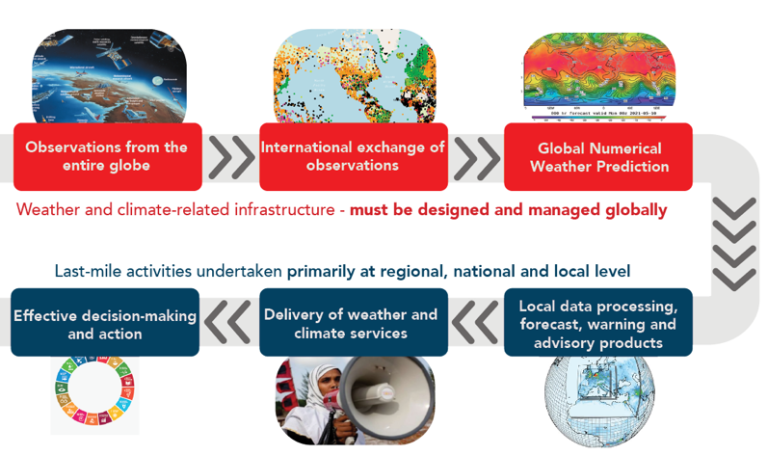
Systematic Observing Financing Facility (SOFF):
The SOFF is a UN vertical fund co-created by WMO, UNDP, and UNEP to close the climate and weather observations data gap in countries with the most severe shortfalls in observations, prioritizing Least Developed Countries (LDCs) and Small Island Developing States (SIDS).
Climate Risk and Early Warning Systems (CREWS):
WMO hosts the secretariat of the CREWS. CREWS provides financing to LDCs and SIDS for people-centred risk informed early warning systems to reduce vulnerability and strengthen resilience and adaptive capacity.


